Space Weather Observations, Alerts, and Forecast
3-day Solar-Geophysical Forecast
Product: 3-Day Forecast
- Issued: 2024 Apr 27 0030 UTC
Prepared by the U.S. Dept. of Commerce, NOAA, Space Weather Prediction Center.
Geomagnetic Activity Observation and Forecast
The greatest observed 3 hr Kp over the past 24 hours was 5 (NOAA Scale G1). The greatest expected 3 hr Kp for Apr 27-Apr 29 2024 is 4.00 (below NOAA Scale levels).
| Apr 27 | Apr 28 | Apr 29 | |
|---|---|---|---|
| 00-03UT | 3.67 | 3.67 | 2.67 |
| 03-06UT | 3.00 | 3.33 | 2.00 |
| 06-09UT | 3.00 | 3.33 | 2.33 |
| 09-12UT | 4.00 | 3.00 | 2.67 |
| 12-15UT | 3.00 | 3.00 | 2.33 |
| 15-18UT | 3.00 | 3.33 | 2.33 |
| 18-21UT | 3.00 | 2.00 | 2.33 |
| 21-00UT | 3.67 | 2.00 | 2.33 |
Rationale: No G1 (Minor) or greater geomagnetic storms are expected.
Solar Radiation Activity Observation and Forecast
Solar radiation, as observed by NOAA GOES-18 over the past 24 hours, was below S-scale storm level thresholds.
| Apr 27 | Apr 28 | Apr 29 | |
|---|---|---|---|
| S1 or greater | 15% | 5% | 1% |
Rationale: There is a slight chance for S1 (Minor) storms on 27 Apr due to the location and flare potential of multiple active regions.
Radio Blackout Activity and Forecast
No radio blackouts were observed over the past 24 hours.
| Apr 27 | Apr 28 | Apr 29 | |
|---|---|---|---|
| R1-R2 | 75% | 55% | 35% |
| R3 or greater | 15% | 5% | 5% |
Rationale: R1-R2 (Minor-Moderate) radio blackouts are expected, with a slight chance for an R3 (Strong) event, on 27 Apr. R1-R2 events are likely on 28 Apr and there is a chance for R1-R2 events on 29 Apr.
Real Time Images of the Sun
SOHO EIT 304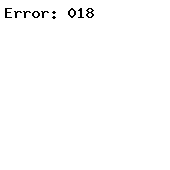
|
SOHO EIT 284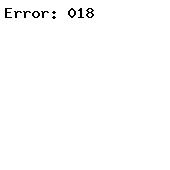
|
Mauna Loa Solar Image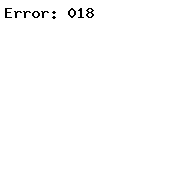
|
The sun is constantly monitored for sun spots and coronal mass ejections. EIT (Extreme ultraviolet Imaging Telescope) images the solar atmosphere at several wavelengths, and therefore, shows solar material at different temperatures. In the images taken at 304 Angstrom the bright material is at 60,000 to 80,000 degrees Kelvin. In those taken at 171 Angstrom, at 1 million degrees. 195 Angstrom images correspond to about 1.5 million Kelvin, 284 Angstrom to 2 million degrees. The hotter the temperature, the higher you look in the solar atmosphere.
Real Time Solar X-ray and Solar Wind
Latest LASCO Solar Corona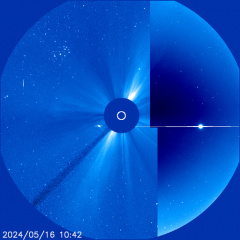
Large Angle and Spectrometric Coronagraph (LASCO). |
Real-Time Solar Wind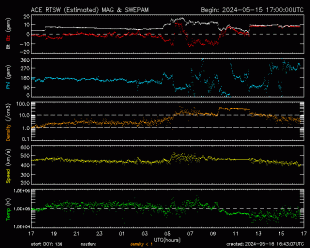
Real-Time Solar Wind data broadcast from NASA's ACE satellite. |
Solar X-ray Flux This plot shows 3-days of 5-minute solar x-ray flux values measured on the SWPC primary and secondary GOES satellites. |
Satellite Environment Plot The Satellite Environment Plot combines satellite and ground-based data to provide an overview of the current geosynchronous satellite environment. |
Solar Cycle
Sun Spot Number Progression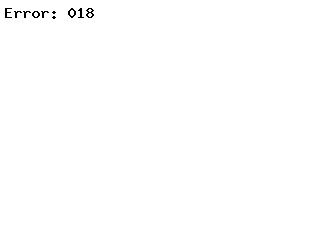 This plot shows the Solar Cycle Sun Spot Number Progression. |
F10.7cm Radio Flux Progression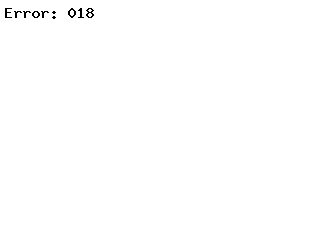 This plot shows the F10.7cm Radio Flux Progression. |
Ap Progression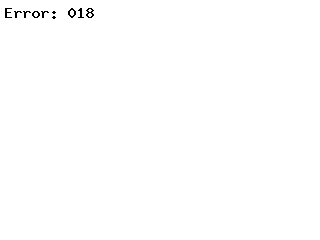 This plot shows the Solar Cycle Ap Progression. |
The Solar Cycle is observed by counting the frequency and placement of sunspots visible on the Sun.
Solar minimum occurred in December, 2008.
Solar maximum was expected to occur in May, 2013.
Auroral Activity Extrapolated from NOAA POES
Northern Hemi Auroral Map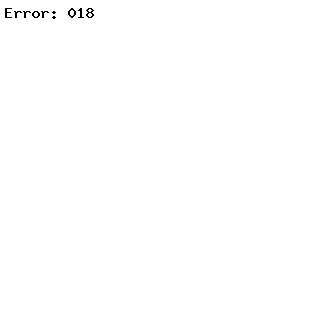
|
Southern Hemi Auroral Map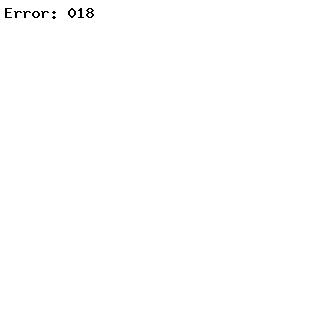
|
Instruments on board the NOAA Polar-orbiting Operational Environmental Satellite (POES) continually monitor the power flux carried by the protons and electrons that produce aurora in the atmosphere. SWPC has developed a technique that uses the power flux observations obtained during a single pass of the satellite over a polar region (which takes about 25 minutes) to estimate the total power deposited in an entire polar region by these auroral particles. The power input estimate is converted to an auroral activity index that ranges from 1 to 10.
VHF and HF Band Conditions
|
|
Credits:
Space Weather Images and Information (excluded from copyright) courtesy of:NOAA / NWS Space Weather Prediction Center
Mauna Loa Solar Observatory (HAO/NCAR)
SOHO (ESA & NASA).
Space Weather links:
3-Day Forecast of Solar and Geophysical Activity
Space Weather Overview
LASCO Coronagraph
Real-Time Solar Wind
Space Weather Advisory Outlooks
Space Weather Forecast Disussions
Space Weather Alerts, Watches and Warnings
Solar and Heliospheric Observatory (SOHO)
The Very Latest SOHO Images
Powered by Space Weather PHP script by Mike Challis
additions by Martin of Hebrides Weather and Ken True of Saratoga Weather
with 3-day Solar-Geophysical Forecast text formatting by Jeremy Dyde of Jerbils Weather









